ECOSat PCB Fabrication and Component Selection
The PCB Fab and Selection team, has analyzed, and designed the system in order to mitigate potential electrical faults and possible worst case scenario failures due to the space environment. The primary issue which has arisen is the growth of tin whiskers, from tinned component leads. Tin whiskers are electrically conductive, crystalline structures of tin that sometimes grow from surfaces where tin (especially electroplated tin) is used as a final finish. Tin whiskers have been observed to grow to lengths of several millimeters (mm) and in rare instances to lengths in excess of 10 mm.
The secondary design constraint is thermal mitigation and component density.
Component Selction
The component selection criteria is based on standards developed by NASA, ESA, and CSA.
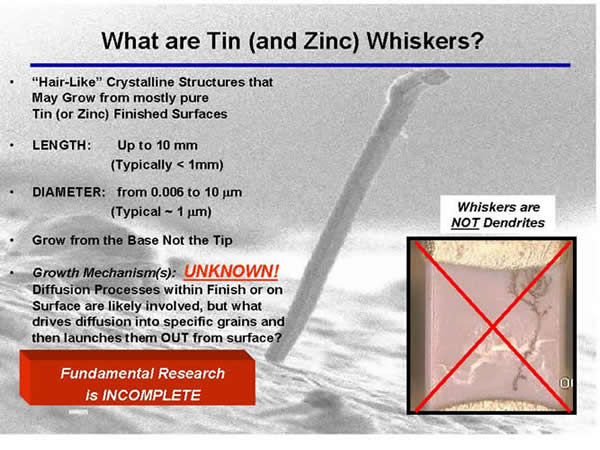
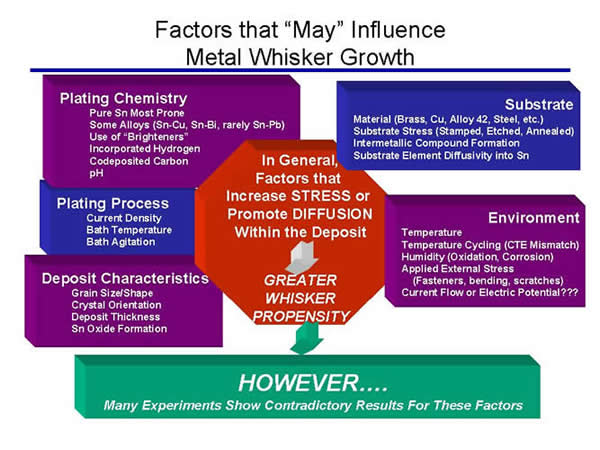
Our team, has currently approved and verified 157 discrete components for various subsystems, performed schematic capture on four of the five critical systems, and designed three of the five printed circuit boards for the UVic ECOSat team.
Printed Circuit Board Fabrication
The currently designed printed circuit boards consist of the Power Regulation/Power Generation, Battery Charging, Thermal Monitoring, and Communications. The Attitude Determination and Control System is slated for design next and will continue on past the end of this project class.
Power System:
The switch mode power supply for the power regulation board is one of the more difficult designs for part selection since each regulator has several dozen parts many of which are large capacitance values that require low ESR and high ripple current filtering. Additionally the output inductors for each regulator require a large footprint area. In order to optimize area without sacrificing performance the problem arises that there is a direct trade-off between ripple current filtering (filtering performance) based on the inductance value and the power dissipation (thermal performance) in the inductor.
The current PCB for the system has been designed around using automotive grade components to reduce thermal risk; additionally all electrolytic capacitors have been replaced by sealed tantalum capacitors for their greater temperature stability and linearity. The inductors have also been chosen carefully from Coilcraft for their high shielding and low off-gassing properties.
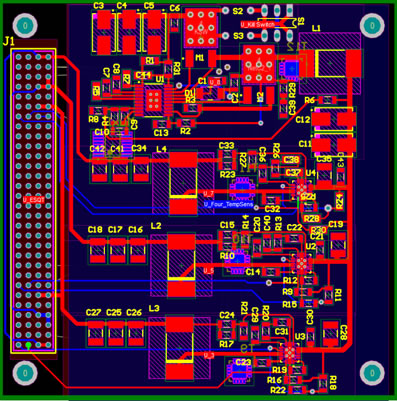
Battery System:
The battery charging system for the satellite implements a Linear Technology charge controller the LTC1960, the controller features SPI communication for the management of cell charging and pack connection to the battery bus. The batteries selected for the system are Panasonic UR14650 Lithium Ion cells, which come from the same chemisty line as cells which have a long flight heritage in the aerospace industry. The cells were additionally chosen for their wide temperature operating range, high energy density, low mass, and small form factor. Product availability and cell mounting configuration (welded tabs) also played a strong factor in the selection of this particular cell.
One such charge controller will be used to manage the charging of each battery pack, of which there will be two per printed circuit board. In this manner it will always be possible to have at a minimum of one battery pack connected to the bus in order to help suppress voltage fluctuations. In addition there will be two such printed circuit boards in the satellite design there by making the system double redundant for the charge controllers and the battery packs have the added feature of being quad redundant. The figure below depicts the current layout for the battery board, it is currently missing the charge controller integrated circuit..
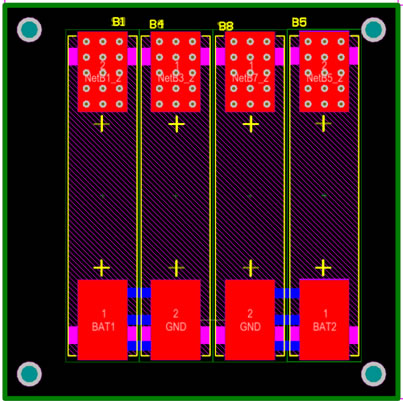
Thermal monitoring consists of two sets of digital temperature sensors sourced from Analog Devices Inc, a generic template for the sensors has been created and is included in all critical systems for ensuring that devices remain in their safe operating area.
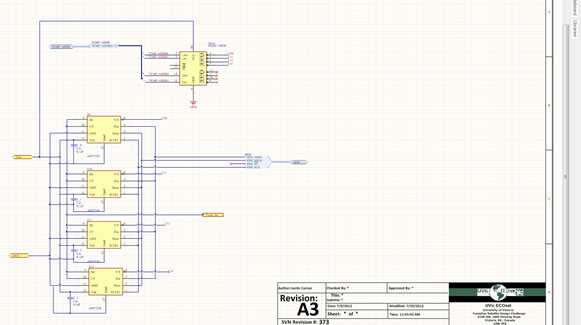
The communication system is currently under design revision by another project team, although part selection and approval is ultimately the final responsibility of this team.
ECOSat and their sponsors provide all the components required for finalized system designs.
Designed and Developed by Anubhav Mishra, Revised by Murray Meehan & Justin Curran




